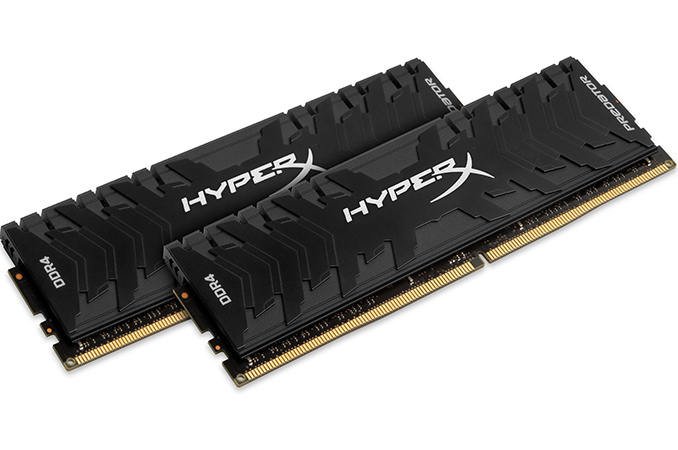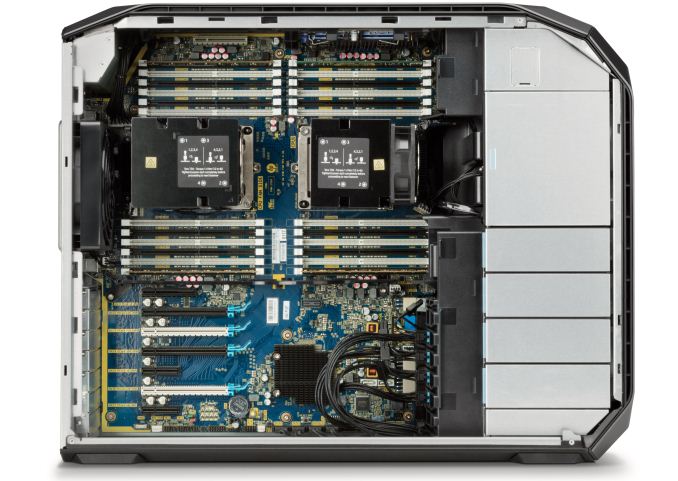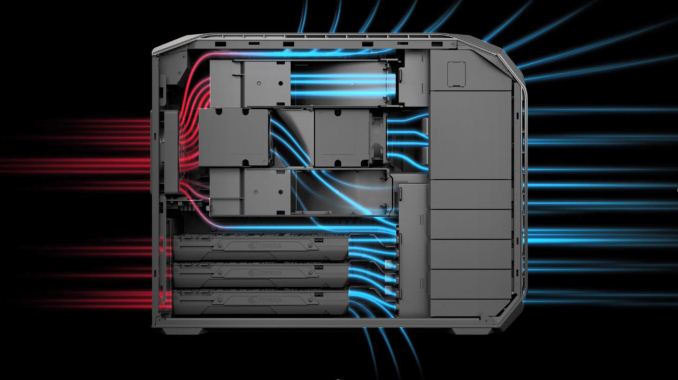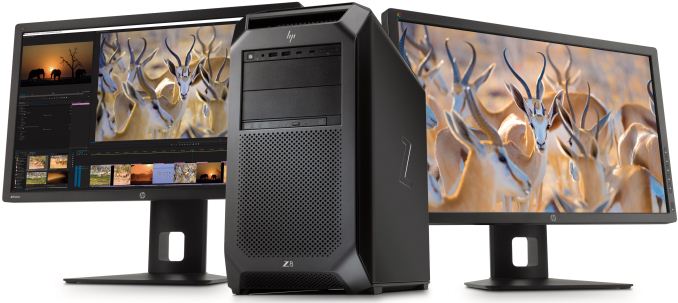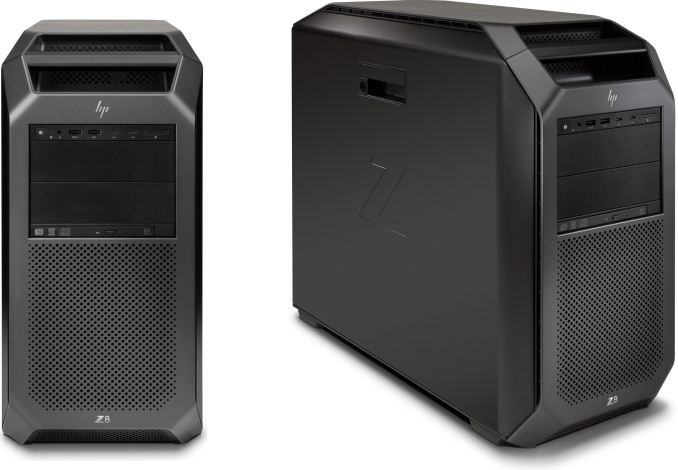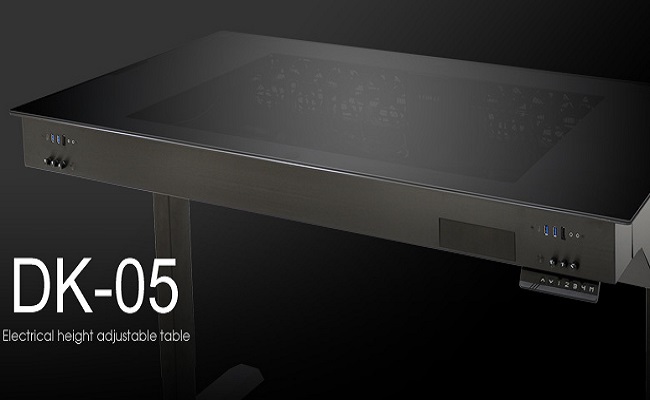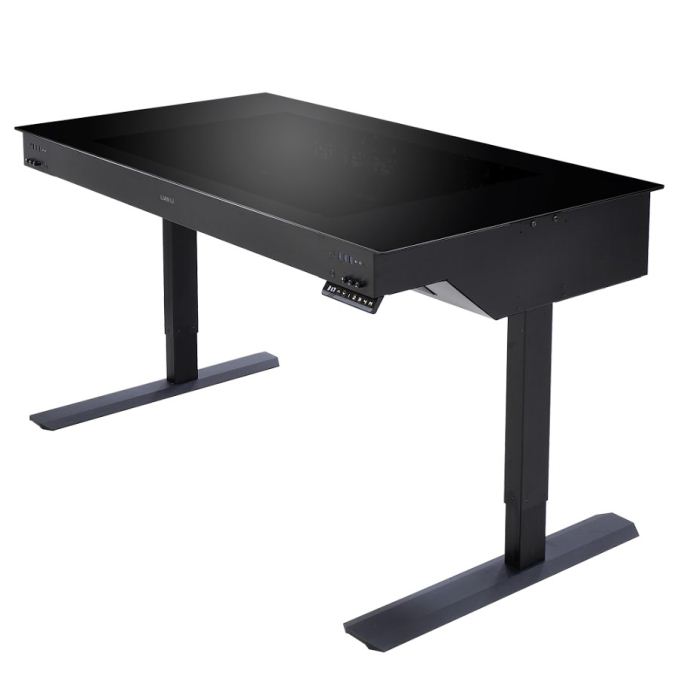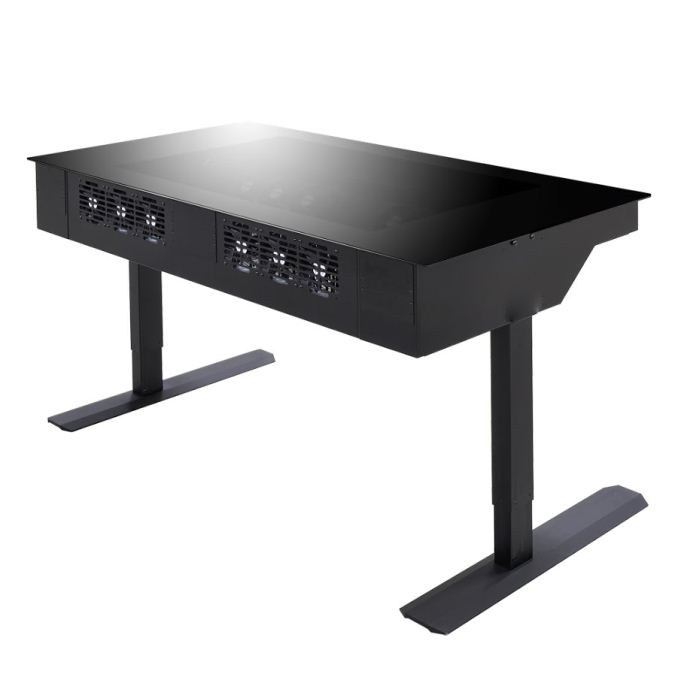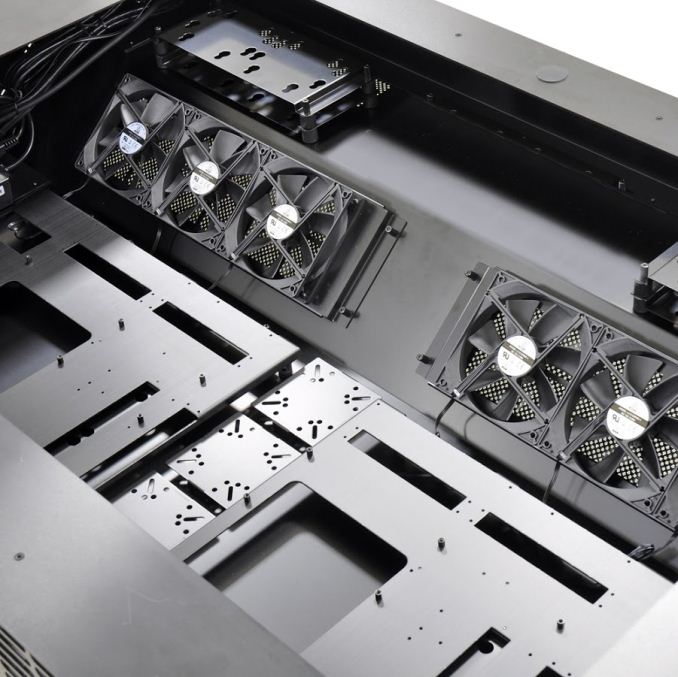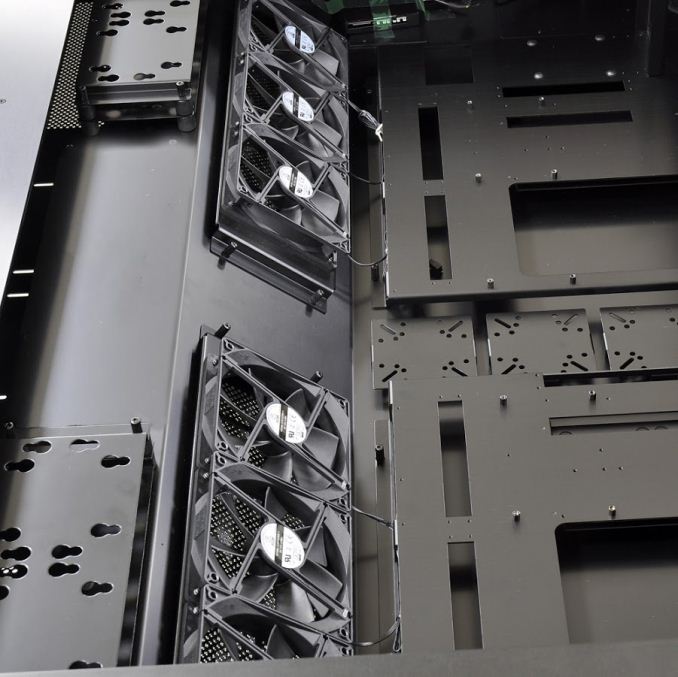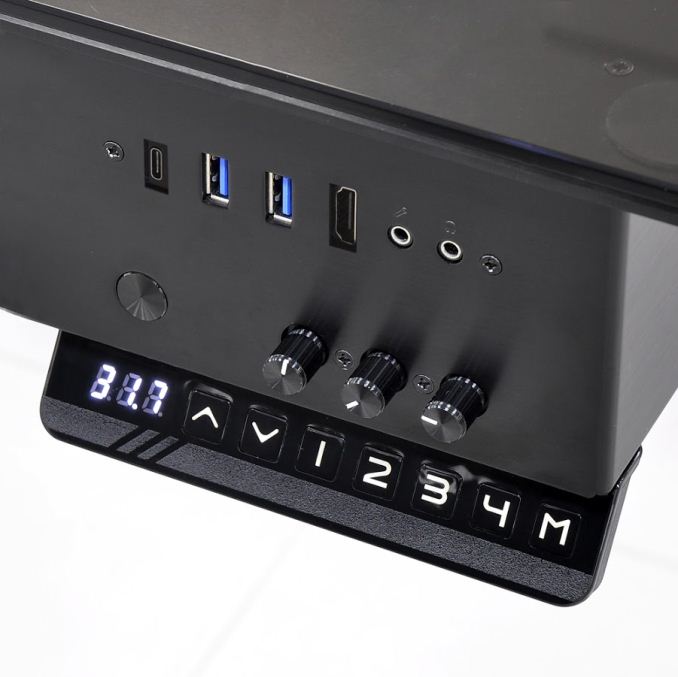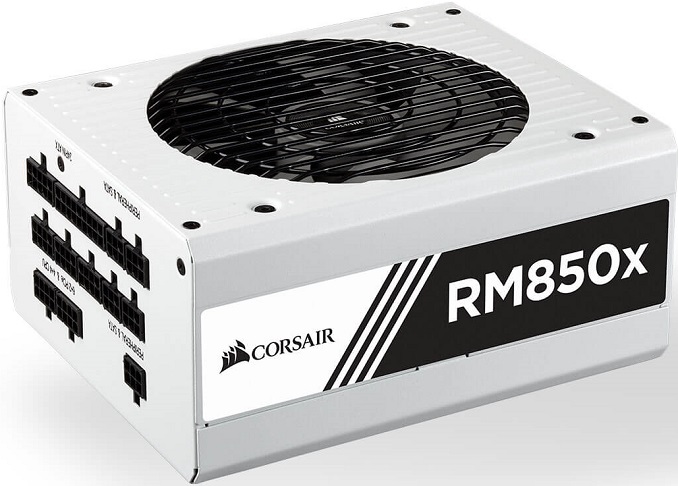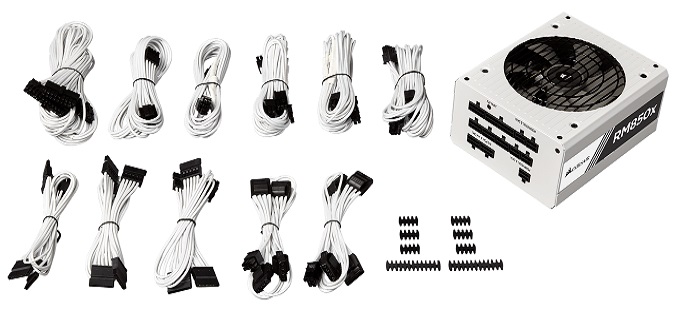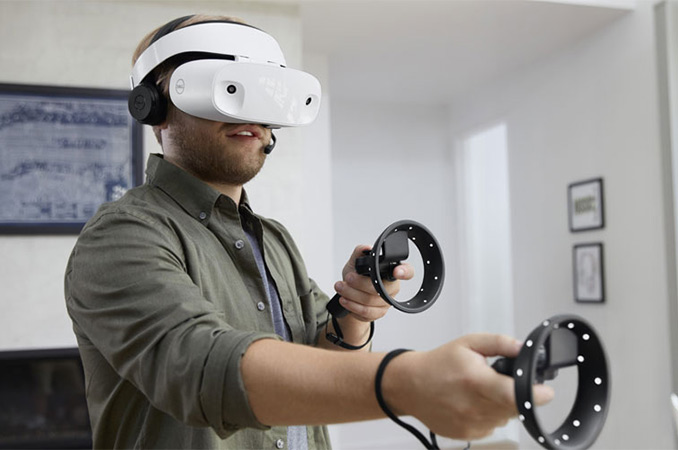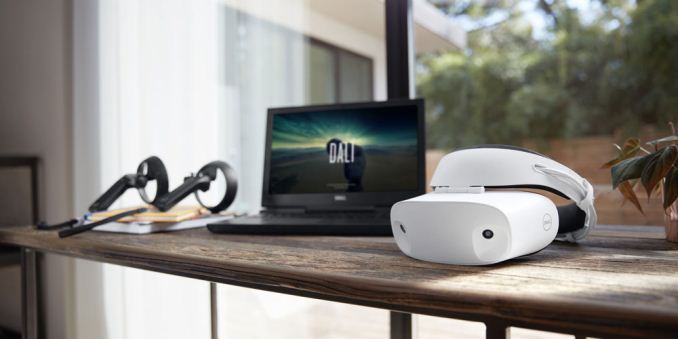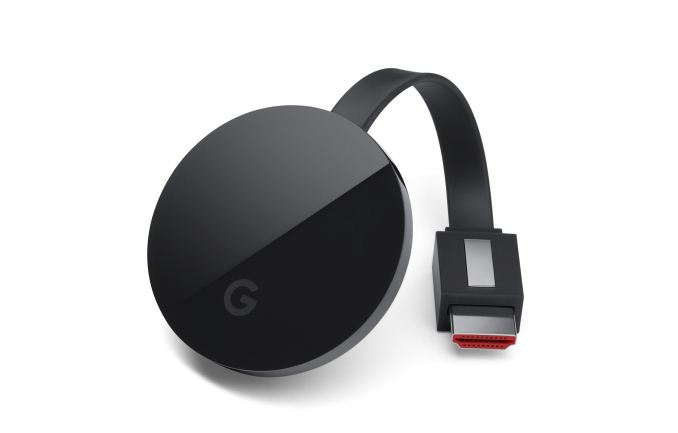Divers
-
Windows 10 : un énigmatique pack pour les nouvelles fonctionnalités
(Génération NT: logiciels)
Une expérience Windows Feature Experience Pack ? Une mystérieuse apparition pour Windows 10, y compris dans le Microsoft Store.
-
Kingston Updates HyperX DDR4 Lineup with DDR4-3000, DDR4-3200 Modules
(AnandTech)
Following Intel’s announcement of the new Core i7 Broadwell-E lineup of HEDT processors with six, eight and ten cores, Kingston has recently refreshed its HyperX family of DDR4 memory modules. The new kits offer up to 64 GB capacities and run at data rates of up to 3333 MT/s with relatively low timings.
The new Kingston HyperX Predator Black DDR4 memory modules feature 4 GB, 8 GB and 16 GB capacities and are offered in 8 GB, 16 GB, 32 GB and 64 GB dual-channel and quad-channel kits. Being designed primarily for quad-channel memory sub-systems (yet, compatible with all DDR4-supporting PCs), the modules will run at low data rates of 3000 MT/s, 3200 MT/s and 3333 MT/s (dual-channel only for 3333), and timings of CL15 for 3000 MT/s or CL16 for 3200/3333 MT/s. All modules are rated to operate at the recommended DDR4 enthusiast setting of 1.35 volts, which is higher than JEDEC’s recommendations, but is in line with the voltage of all high-end DDR4 memory sticks.
Kingston HyperX Predator Black DDR4 DIMMs and Kits Data rate Latency Module Capacity Kit Capacity Number of Modules Voltage Part Number 3000 MT/s CL15 4 GB 8 GB 2 1.35V HX430C15PB3K2/8 4 GB 16 GB 4 HX430C15PB3K4/16 8 GB 16 GB 2 HX430C15PB3K2/16 8 GB 32 GB 4 HX430C15PB3K4/32 16 GB 32 GB 2 HX430C15PB3K2/32 16 GB 64 GB 4 HX430C15PB3K4/64 3200 MT/s CL16 4 GB 8 GB 2 1.35V HX432C16PB3K2/8 4 GB 16 GB 4 HX432C16PB3K4/16 8 GB 16 GB 2 HX432C16PB3K2/16 8 GB 32 GB 4 HX432C16PB3K4/32 3333 MT/s CL16 8 GB 16 GB 2 1.35V HX433C16PB3K2/16 To simplify setting the right clock-rates and timings on compatible Intel X99 and Intel 100-series motherboards, the HyperX Predator Black modules support XMP 2.0 SPD profiles. To maximize their cooling capabilities for overclocking, the memory sticks are equipped with aluminum heat spreaders. All of Kingston’s HyperX Predator Black DDR4 modules are validated to work with Skylake-S (i7-6700K etc), Haswell-E (5960X etc) and Broadwell-E (6950X etc) processors.
Exact prices of the new HyperX Predator Black DDR4 memory modules from Kingston are unknown, but we expect them to be in line with similar components of these specifications.
-
Mises à jour et téléchargements de la semaine
(Génération NT: logiciels)
Retrouvez notre résumé des mises à jour et téléchargements récemment proposés.
-
Breaking Up the NSA
(Schneier on Security)
The NSA has become too big and too powerful. What was supposed to be a single agency with a dual mission -- protecting the security of U.S. communications and eavesdropping on the communications of our enemies -- has become unbalanced in the post-Cold War, all-terrorism-all-the-time era.
Putting the U.S. Cyber Command, the military's cyberwar wing, in the same location and under the same commander, expanded the NSA's power. The result is an agency that prioritizes intelligence gathering over security, and that's increasingly putting us all at risk. It's time we thought about breaking up the National Security Agency.
Broadly speaking, three types of NSA surveillance programs were exposed by the documents released by Edward Snowden. And while the media tends to lump them together, understanding their differences is critical to understanding how to divide up the NSA's missions.
The first is targeted surveillance.
This is best illustrated by the work of the NSA's Tailored Access Operations (TAO) group, including its catalog of hardware and software "implants" designed to be surreptitiously installed onto the enemy's computers. This sort of thing represents the best of the NSA and is exactly what we want it to do. That the United States has these capabilities, as scary as they might be, is cause for gratification.
The second is bulk surveillance, the NSA's collection of everything it can obtain on every communications channel to which it can get access. This includes things such as the NSA's bulk collection of call records, location data, e-mail messages and text messages.
This is where the NSA overreaches: collecting data on innocent Americans either incidentally or deliberately, and data on foreign citizens indiscriminately. It doesn't make us any safer, and it is liable to be abused. Even the director of national intelligence, James Clapper, acknowledged that the collection and storage of data was kept a secret for too long.
The third is the deliberate sabotaging of security. The primary example we have of this is the NSA's BULLRUN program, which tries to "insert vulnerabilities into commercial encryption systems, IT systems, networks and endpoint communication devices." This is the worst of the NSA's excesses, because it destroys our trust in the Internet, weakens the security all of us rely on and makes us more vulnerable to attackers worldwide.
That's the three: good, bad, very bad. Reorganizing the U.S. intelligence apparatus so it concentrates on our enemies requires breaking up the NSA along those functions.
First, TAO and its targeted surveillance mission should be moved under the control of U.S. Cyber Command, and Cyber Command should be completely separated from the NSA. Actively attacking enemy networks is an offensive military operation, and should be part of an offensive military unit.
Whatever rules of engagement Cyber Command operates under should apply equally to active operations such as sabotaging the Natanz nuclear enrichment facility in Iran and hacking a Belgian telephone company. If we're going to attack the infrastructure of a foreign nation, let it be a clear military operation.
Second, all surveillance of Americans should be moved to the FBI.
The FBI is charged with counterterrorism in the United States, and it needs to play that role. Any operations focused against U.S. citizens need to be subject to U.S. law, and the FBI is the best place to apply that law. That the NSA can, in the view of many, do an end-run around congressional oversight, legal due process and domestic laws is an affront to our Constitution and a danger to our society. The NSA's mission should be focused outside the United States -- for real, not just for show.
And third, the remainder of the NSA needs to be rebalanced so COMSEC (communications security) has priority over SIGINT (signals intelligence). Instead of working to deliberately weaken security for everyone, the NSA should work to improve security for everyone.
Computer and network security is hard, and we need the NSA's expertise to secure our social networks, business systems, computers, phones and critical infrastructure. Just recall the recent incidents of hacked accounts -- from Target to Kickstarter. What once seemed occasional now seems routine. Any NSA work to secure our networks and infrastructure can be done openly—no secrecy required.
This is a radical solution, but the NSA's many harms require radical thinking. It's not far off from what the President's Review Group on Intelligence and Communications Technologies, charged with evaluating the NSA's current programs, recommended. Its 24th recommendation was to put the NSA and U.S. Cyber Command under different generals, and the 29th recommendation was to put encryption ahead of exploitation.
I have no illusions that anything like this will happen anytime soon, but it might be the only way to tame the enormous beast that the NSA has become.
This essay previously appeared on CNN.com.
-
Apple passe la limite de téléchargement via le réseau cellulaire de 150 à 200 Mo
(MacBidouille)
Apple vient d'étendre la limite de téléchargement de son App Store iOS. Dorénavant elle est fixée à 200 Mo contre 150 Mo auparavant.
Cela permettra de récupérer des mises à jour de logiciels plus gros sans avoir à trouver un réseau Wi-Fi ou à créer un partage de connexion entre deux iPhone.Dans un monde idéal, Apple donnerait le choix de cette limite aux utilisateurs, mais elle fait certainement face à la pression des opérateurs qui, tout en vendant des abonnements contenant de plus en plus de volume de données à utiliser, restent ravis que nous ne les utilisions pas.
-
Samsung va débloquer la fonction FM sur tous ses futurs smartphones
(MacBidouille)
NextRadio a annoncé dans un communiqué de presse que Samsung allait débloquer la fonction FM de ses appareils dans tous ses futurs modèles. Ils pourront donc utiliser l'application de NextRadio pour écouter les radios FM. Les avantages sont multiples : écoute gratuite, consommation d'énergie moindre que pour du streaming mais aussi possibilité d'avoir accès à l'écoute de la radio en cas de non couverture par un réseau efficace.
Pour rappel, Apple avait été sommée aux Etats-Unis par la FCC d'activer la radio pour permettre l'accès aux bulletins d'information urgents.
Cela ne fait toutefois pas les affaires d'Apple, qui préfère sans l'ombre d'un doute vendre des abonnements Apple Music. -
Joli bonus pour la nouvelle responsable juridique d'Apple
(MacBidouille)
Apple a engagé une nouvelle responsable pour son service juridique, Katherine Adams, suite au départ en retraite de Bruce Sewell.
Ce poste est devenu critique pour la société qui passe pas mal de temps à attaquer des sociétés comme Qualcomm ou à se défendre dans une multitude de procès pour violation de brevets.
Si l'on ignore le salaire qu'aura Katherine Adams on connait les bonus en actions auxquels elle a eu droit comme cadeau d'arrivée.
Elle va toucher 57 482 actions restreintes dont elle pourra réellement disposer progressivement d'ici septembre 2020.
Le bonus est également conditionné aux performances d'Apple sur les marchés. Au maximum cela représentera un bonus d'un peu plus de 19 millions de dollars sur cette période.Pour rappel, ses performances auront une réelle incidence sur les performances des résultats d'Apple. Par exemple, si elle arrive à faire annuler la décision de l'Europe de forcer Apple de payer à l'Irlande la somme de 13 milliards de dollars, cela évitera aux résultats de la société de plonger et d'avoir une incidence négative sur les cours en bourse.
-
Un système d'exploitation from Facebook en préparation
(Génération NT: logiciels)
Pour soutenir ses ambitions dans le matériel, Facebook développe son propre système d'exploitation avec pour objectif de ne pas dépendre de concurrents comme Google avec Android.
-
HP Updates Z8 Workstations: Up to 56 Cores, 3 TB RAM, 9 PCIe Slots, 1700W
(AnandTech)
HP has updated its most powerful dual-processor Z8 workstation line with the latest components. The new systems contain up to two Intel Skylake-SP Xeon CPUs with up to 56 cores in total, up to 3 TB of DDR4 RAM, terabytes of storage as well as up to 9 PCIe slots along with optional TB3 and 10 GbE support via add-in cards. The HP Z8 workstation will be the pinnacle of HP’s computers for personal and professional use and its price in high-end configurations will surpass even the top-of-the-range gaming PCs.
Historically, most high-end workstations relied on server platforms to support more than one CPU and thus offer higher performance than any consumer desktop. The emergence of dual-core and then multi-core CPUs a little more a decade ago changed the workstation market quite quickly and significantly. In a world with quad-core CPUs, 4-way workstations did not make a lot of sense for 99% of the users and therefore they quickly became extinct. Moreover, by now, even 2-way workstations became rare. Today, the vast majority of workstations use one multi-core CPU that provides enough compute horsepower for professional workloads, whereas GPU-based accelerators are used for tasks like simulations. Nonetheless, there are still users who need maximum x86 performance and who therefore require 2-way workstations — and the HP Z8 is aimed precisely at such users. While the Intel Xeon Scalable processors with extreme core count were developed primarily with servers in mind, the Z8 is a system that people put on their desks and therefore it has a number of specific requirements regarding noise levels, features, security, compatibility with components and so on.
One of the key components of all PCs is its microprocessor. When it comes to the HP Z8, it is based on up to two Intel Xeon Platinum 8180 with 28 cores and 205 W TDP each, which means that the system has to remove 410 W of thermal energy only from CPUs, and this requirement had a significant impact on the design of the whole system. The company did not want to use a liquid cooling system, so it had to design an air cooling solution capable of cooling down two extremely hot CPUs as well as up to 24 DDR4-2666 memory modules. Each processor has its own radiator equipped with a high-pressure air fan (which speed is regulated by BIOS in accordance with system temperature monitored by numerous sensors). In addition, the system has multiple airflow vents on the front and on the top as well as one fan that exhausts hot air on the back. According to HP, such a chassis architecture ensures that the second CPU does not re-use warm air from the first one, but since they are located in close proximity, one will always affect another with its heat. Finally, the system has additional fans that cool down other components and produce more airflow within the chassis.
Speaking of other components, the HP Z8 supports plenty of them — whatever one might want. First off, the system has four PCIe 3.0 x16 slots for graphics cards or SSDs (up to AMD Radeon Pro, NVIDIA Quadro P100 or GP100, up to 4 TB HP Z Turbo Drive Quad Pro, etc.) three PCIe 3.0 x8 (two are non-hot swap) slots for SSDs and two PCIe 3.0 x4 slots. In addition to PCIe-based storage, the Z8 also features four 2.5”/3.5” bays for SATA/SAS SSDs or HDDs as well as two external 5.25” bays that can also accommodate drive form-factor storage devices using appropriate adapters. Those who need it, HP may also install an SD card reader as well as a slim DVD or Blu-ray ODD.
When it comes to connectivity, the HP Z8 has all the bases covered. By default, the system supports two GbE connectors (powered by Intel controllers), an 802.11ac Wi-Fi + Bluetooth module (Intel Wireless-AC 8265 controller), two USB 3.1 Type-C ports and two USB 3.1 Type-A ports on the front, four USB 3.1 Type-A ports on the back, multi-channel audio connectors (a Realtek HD ALC221 controller) on the back, a TRRS audio connector on the front and so on. Meanwhile, owners can optionally order to install two 10 GbE controllers, a Thunderbolt 3-supporting add-in-card and a variety of custom components for various industries and workloads (an external audio solution for a 5.25” bay, for example).
Since many businesses and enterprises require robust security for all of their machines, the HP takes everything seriously and ships the Z8 with a whole set of security features that it calls HP SureStart. The system features secure authentication, full volume encryption, TPM 2.0, has a Kensington lock and so on.
All the CPUs, GPUs, SSDs and other components require a lot of power and HP Z8 has plenty of it. The manufacturer offers 1125 W, 1450 W or 1700 W internal PSUs with up to 90 % efficiency. The PSU is located in a compartment behind the motherboard, so chances are that HP uses proprietary units.
General Specifications of the HP Z8 2017 HP Z8 G4 CPU Family Intel Xeon Scalable processor Models Xeon Platinum 8180 (2.5GHz/3.8GHz, 38.5MB cache, 28 cores)
Xeon Platinum 8160 (2.1 GHz/3.7 GHz, 33 MB cache, 24 cores)
Xeon Gold 6152 (2.1 GHz/3.7 GHz, 30.25 MB cache, 22 cores)
Xeon Gold 6154 (3 GHz/3.7 GHz, 24.75 MB cache, 18 cores)
Xeon Gold 6148 (2.4 GHz/3.7 GHz, 27.5 MB cache, 20 cores)
Xeon Gold 6142 (2.6 GHz/3.7 GHz, 22 MB cache, 16 cores)
Xeon Gold 6136 (3 GHz/3.7 GHz, 24.75 MB cache, 12 cores)
Xeon Gold 6140 (2.3 GHz/3.7 GHz, 24.75 MB cache, 18 cores)
Xeon Gold 6134 (3.2 GHz/3.7 GHz, 24.75 MB cache, 8 cores)
Xeon Gold 6132 (2.6 GHz/3.7 GHz, 19.25 MB cache, 14 cores)
Xeon Gold 6130 (2.1 GHz/3.7 GHz, 22 MB cache, 16 cores)
Xeon Gold 6128 (3.4 GHz/3.7 GHz, 19.25 MB cache, 6 cores)
Xeon Gold 5120 (2.2 GHz/3.2 GHz, 19.25 MB cache, 14 cores)
Xeon Gold 5118 (2.3 GHz/3.2 GHz, 16.5 MB cache, 12 cores)
Xeon Gold 5122 (3.6 GHz/3.7 GHz, 16.5 MB cache, 4 cores)
Xeon Silver 4116 (2.1 GHz/3 GHz, 16.5 MB cache, 12 cores)
Xeon Silver 4114 (2.2 GHz/3 GHz, 13.75 MB cache, 10 cores)
Xeon Silver 4112 (2.6 GHz/3 GHz, 8.25 MB cache, 4 cores)
Xeon Silver 4108 (1.8 GHz/3 GHz, 11 MB cache, 8 cores)
Xeon Bronze 3106 (1.7 GHz, 11 MB cache, 8 cores)
Xeon Bronze 3104 (1.7 GHz, 8.25 MB cache, 6 cores)Graphics Entry NVIDIA Quadro P400 (2 GB GDDR5)
NVIDIA Quadro P600 (2 GB GDDR5)
AMD FirePro W2100 (2 GB DDR3)Mid-Range NVIDIA Quadro P1000 (4 GB GDDR5)
NVIDIA Quadro P2000 (5 GB GDDR5)
AMD Radeon Pro WX 3100 (4 GB GDDR5)
AMD Radeon Pro WX 4100 (4 GB GDDR5)High-End NVIDIA Quadro P4000 (8 GB GDDR5)
AMD Radeon Pro WX 7100 Graphics (8 GB GDDR5)Ultra High-End NVIDIA Quadro P5000 (16 GB GDDR5X)
NVIDIA Quadro P6000 (24 GB GDDR5X)
AMD Radeon Pro WX 9100 Graphics (16 GB HBM2)
NVIDIA Quadro GP100 (16 GB HBM2)RAM 24 DDR4 DIMMs, up to 1.5 TB of DDR4-2666
(3TB options in H1 2018, when M CPUs are available)Storage Bays 4 × 2.5"/3.5", 2 × 5.25", 1 × slim 5.25" for ODDs Options 300 GB SAS (15000 rpm)
500 GB up to 2 TB SATA (7200 rpm)
500 GB SATA SED (7200 rpm)
1 TB up to 4 TB 7200 rpm SATA Enterprise
256 GB up to 2 TB SATA SSD
256 GB up to 512 GB SATA SED Opal 2 SSD
240 GB up to 480 GB SATA Enterprise SSD
256 GB up to 1 TB HP Z Turbo Drive PCIe SSD M.2
256 GB up to 512 GB HP Z Turbo Drive PCIe SED SSD M.2
256 GB up to 4 TB HP Z Turbo Drive Quad Pro PCIe SSD
HP Slim DVD-ROM
HP Slim Blu-ray Writer
HP Slim DVD-WriterNetworking GbE Integrated Intel I219-LM PCIe GbE
Integrated Intel X722 PCIe GbE
Intel I350-T2 dual-port GbE NIC
Intel I350-T4 dual-port GbE NIC
Intel I210-T1 PCIe GbE10 GbE Intel X550-T2 dual-port GbE NIC
Intel X710-DA2 dual-port GbE NIC
Intel 10 GbE SFP+ SR transceiver
HP dual-port 10GBase-T NICWireless Intel Dual Band Wireless-AC 8265 802.11a/b/g/n/ac (2x2) Wi-Fi and Bluetooth 4.2 Combo, non-vPro PCIe 3.0
Expansion Slotsx4 2 x8 3 x16 4 Notes 1 PCIe x8 has rear bulkhead access and 2 PCIe x8 are internal access only. Slot 1: Transforms to PCIe x8 when 2nd CPU is installed.
Slots 3 and 6: are available only when 2nd processor is installed.
PCIe x16 - Available only when 2nd processor is installedUSB 3.1 2 × Type-A, 2 × Type-C 3.0 4 × Type-A 2.0 unknown Thunderbolt Optional Thunderbolt 3 add-in-card Card Reader 4-in-1 card reader PSUs 1125 W, 1450 W, 1700 W Other I/O Audio connectors, Realtek HD ALC221 controller Input Devices HP Wireless Business Slim Keyboard and Mouse Combo
HP USB Business Slim Keyboard
USB Premium wired keyboard
USB Smart Card (CCID) keyboard
3Dconnexion CADMouse
HP USB Optical Mouse
HP PS/2 Mouse
HP USB Hardened MouseDimensions 8.5 × 21.7 × 17.5 in
21.59 × 55.12 × 44.45 cmWeight Starting at 49.4 lb
Starting at 22.4 kgOperating System Windows 10 Pro for Workstations
HP Installer Kit for Linux
HP Red Hat Enterprise LinuxPrice Starting at $2,439 Now, time to talk about availability and pricing. HP intends to ship the HP Z8 workstations in October. An entry-level model with one CPU, a basic GPU and storage will cost $2,439. Meanwhile, once the system is equipped with two Xeon Platinum 8180 CPUs, NVIDIA Quadro P100/GP100 graphics, multiple PCIe SSDs, 3 TB of DDR4 memory, several 12 TB HDDs and various advanced I/O capabilities (TB3, 10 GbE, etc.), its price will easily hit tens of thousands of dollars.
It's normally at this point that a vendor such as HP states that the high-end models are likely to be sold under B2B contracts, where per-unit costs are not as severe. One OEM has told us that only 5% of sales of their high-end workstations come through direct sales for onlike pricing.
Gallery: HP Updates Its Dual-Processor Z8 Workstation: Up to 56 Cores, 3 TB RAM, 9 PCIe Slots, 1700WRelated Reading
- HP Announces Omen X Laptop: 17.3” LCD, Core i7 + GeForce GTX with Overclocking
- HP Expands Commercial VR Strategy: Z VR Backpack and Immersion Centers
- HP Launches Elite x2 1012 G2 2-in-1: 12.3-Inch Display, Kaby Lake, 1 TB SSD, 16 GB LPDDR3, TB3
- HP Z2 Mini G3 Announced: Miniature Professional Workstation with Xeon and Quadro
- HP Introduces HP ENVY 13 Laptops with Kaby Lake, USB-C, New Battery, $849
- HP Updates The Z240 Workstation With The Core i7-6700K
-
Apple propose la 10.13.4 beta 6 aux développeurs
(MacBidouille)
Apple a mis à la disposition des développeurs la sixième beta de la 10.13.4.

Les changements apportés ne sont pas encore connus.
-
Les pires mots de passe de 2019
(Génération NT: logiciels)
Et voilà le beau classement des pires mots de passe de 2019 concocté comme de tradition par SplashData.
-
Windows 10 et Windows Update : les pilotes dans les mises à jour optionnelles
(Génération NT: logiciels)
Reprise de la publication de préversions de Windows 10 dans le canal Fast nouvelle formule. Les mises à jour optionnelles de drivers avec Windows Update se confirment.
-
Microsoft offre un nouveau logo à Windows 10
(Génération NT: logiciels)
Microsoft avait annoncé une refonte visuelle majeure de l'ensemble de ses produits et services, et voilà que l'on découvre les logos en question, y compris celui de Windows 10.
-
Fin de Windows 7 : Microsoft Security Essentials bénéficiera de mises à jour (définitions de malwares)
(Génération NT: logiciels)
Après la fin de support de Windows 7, la protection Microsoft Security Essentials aura encore droit à des mises à jour pour les signatures de malwares.
-
Lian-Li Announces Availability of the DK-05 Motorized Adjustable PC Desk
(AnandTech)
Lian-Li has been a staple in the PC industry for a number of years now, producing a number of well built and equally well designed aluminum PC cases. They have come out with chassis to hold SFF Mini-ITX up to E-ATX based systems, all the way to full-size desks. However, the company isn't just in the traditional chassis business, and a few years ago they branched out with the release of their unique DK-Q2, their first computer desk which housed full sized components underneath a layer of tempered glass. Since then they have released the DK-03, last year’s first motorized, height adjustable enclosed DK-04, and now they are taking the wraps off of the latest version of their PC desk design: the DK-05.
Lian-Li DK-05
The DK-05 was first shown in Lian-Li’s booth at CES earlier this year. Lian-Li says they have added more cooling and more flexibility in the latest iteration of their motorized adjustable PC desk. The jet black aluminum DK-05 is able to support two complete workstations under the tinted tempered glass surface, capable of fitting up to E-ATX sized motherboards. By comparison, the outgoing DK-04 was only able to accommodate one system. Consequently, the overall size of the DK-05 has grown a bit to 140cm(55.1”) wide x 689mm(27/1”) tall (minimum) x 780mm(30.7”) deep in order to have enough room to house two systems comfortably. These dimensions allow for plenty of workspace on top for multiple monitors, keyboards/mice, and other accessories.
Since it now has the ability to hold two systems, the number of fan locations increased from 8 in the DK-04 to 12 for the DK-05 (6x front, 6x rear – all 120mm w/ 12 fans included). This was likely necessary in order to remove the heat created by two complete PCs inside the tempered glass top. Designed for liquid cooling, the DK-05 can hold one 480mm radiator (left side rear), and 3 360mm radiators in various locations. Between the motherboard trays are mountings for pumps, reservoirs, or additional drive storage. Each side has a removable motherboard tray where owners mount their systems, including ATX power supplies up to 280mm in length, graphics cards up to 360mm in length, while the headroom for CPU coolers maxes out at 160mm high.
There are two independent front panels connecting to each system, with one on the left and one on the right. Both are mirror images of each other, containing 2x USB 3.0, 1x USB 3.1 Type-C, 1x HDMI, HD Audio, power button (no reset buttons?), and dials for adjusting RGB LEDs. Lian-Li considers the desk VR ready, as there is are HDMI outputs on both front panels to connect your VR headset of choice. The right side of the desk below the front panel is where users will find buttons to control desk height. A digital display shows the current height (in CM) and to the right of it are the control surfaces for adjustment. There are two up and down arrows for manual height control, as well as having four user-programmable presets. The desk has enough range to accomodate both sitting and standing configurations, with a minimum height of 68.9cm(27.1”) to maximum height of 117.5cm(46.3”).
Full specifications list below:
Lian-Li DK-05 Specifications Model DK-05 Dimensions (W)1400mm x(H)689mm~1175mm x(D)780mm Color Black Body/Leg Material Aluminum / Iron Net Weight -kg 5.25"/3.5" drive bays (External) None Motherboard Tray S1 E-ATX S2 E-ATX or Mini-ITX (choose one) Expansion Slot S1 8 S2 8 or 2 Maximum Compatibility S1 VGA length: 360mm / PSU: 280mm / CPU cooler height: 160mm S2 HDD Bay S1 3.5"/2.5" HDD x4 + 2.5" HDD x2S2 I/O Ports S1 USB3.0 x2 / HDMI x1 / USB3.1(Type-C) x1 / HD AudioS2 System Fan 120mm fan x6 (Front) / 120mm fan x6 (Rear) PSU Type ATX PSU (Optional) More images below:
Gallery: Lian-Li DK-05The Lian-Li DK-05 is available now at an MSRP of $2099.99.
Related Reading:
-
Firefox : correction en urgence d'une vulnérabilité exploitée dans des attaques
(Génération NT: logiciels)
Une 0day était exploitée dans des attaques pour Firefox. Mozilla propose un patch via une mise à jour de son navigateur.
-
Mises à jour et téléchargements de la semaine
(Génération NT: logiciels)
Retrouvez notre résumé des mises à jour et téléchargements récemment proposés.
-
Corsair Announces White Color Option for RM750x and RM850x Power Supplies
(AnandTech)
Corsair has announced a new color option for the RMx series power supplies, Arctic White. Readers with a watchful eye may remember that a while ago the company brought out a special edition of the RM1000i PSU in white. Now by popular demand, Corsair has made this a standard option for two of their PSUs, the RM750x and RM850x.
The newly redecorated power supplies are otherwise identical to their existing black-painted counterparts. This means they have fully modular cabling which can minimize the amount of wires users need to use, and see, in their cases allowing for a cleaner look. The cables come already individually sleeved in white with black connectors using three layers of paracord for each. Also something of note, one will find in-line capacitors on the ATX, EPS12V, and PCIe cables which Corsair says helps reduce ripple and noise, and improve voltage regulation.
Features of the RMx series include a Zero RPM Fan Mode, where the rifle bearing 135mm fan sit idle during light to medium loads, only spinning up with heavy loads or at a specific temperature. On top of that The RMx line carries an 80 Plus Gold certification for efficiency, uses 100% all Japanese capacitors rated to 105C, and provides owners with a long 10 year warranty.
Corsair RM750x and RM850x Specifications RM750x RM850x Rated Combined Rated Combined +3.3V 25A 150W 25A 150W +5V +12V 62.5A 750W 70.8A 850W -12V 0.8A 9.6W 0.8A 9.6W +5Vsb 3A 15W 3A 15W Total Power 750W 850W Connector Type RM750x RM850x ATX 24 Pin 1 EPS 4+4 Pin 1 2 PCIe 6+2 Pin 4 6 SATA 8 10 4P Molex 7 8 Floppy 1 Gallery: Corsair RMx whiteThe Artic White versions will fetch a $10 premium over the traditional charcoal/black RMx models. They are priced at $149.99 for the RM750x and $169.99 for the RM850x at the Corsair Website. Finally, Corsair is also stating that at least for now, this is it for white RMx PSUs; there are no plans to produce the lower wattage RMx series power supplies in white.
Related Reading:
-
Dell’s Visor Available for Pre-Order: A Mixed Reality Headset, Ships in Mid-October
(AnandTech)
Dell has begun to take pre-orders on its Visor headset for Windows Mixed Reality applications. The company will start shipments of the device in mid-October, just in time for Microsoft’s Windows 10 Creators Update that arrives on October 17 and ahead of the holiday season.
Starting from September 14, Dell’s Visor WMR headset is available for pre-order from Dell.com/Visor in the U.S. and from PCWorld in the U.K. The headset itself is priced at $349.99, the controller kit costs $99.99 and a Visor with controllers is priced at $449.99. In the U.K., the whole kit is available for pre-order at £429.99. In order to play non-controller based AR/VR games on the Visor, users will also have to get an Xbox One controller. Dell will start to ship its Visor product on October 17, 2017. In addition, the company plans to make the device available in BestBuy stores and directly from Microsoft (online and offline).
Dell’s Visor AR/VR headset complies with Microsoft’s requirements for headsets compatible with the Windows Mixed Reality platform: it connects to Windows 10-based PCs using HDMI and USB cables, it features two 1440×1440@90 Hz LCD panels (for a total resolution of 2880×1440) and two cameras to capture the outside world. While ergonomics and industrial designs of WMR-compliant headsets from Dell, Acer, ASUS and Lenovo are different, internally they end up being very similar.
The shipments date of the Dell Visor coincides with the launch date of Microsoft’s Windows 10 Creators Update, which will bring support for Windows Mixed Reality headsets to end users. That said it is highly likely that other makers of WMR gear will try to ship their products around the time of the official launch of the platform. In the meantime, Dell seems to be the first with pre-orders.
Related Reading
-
OpenBSD 3.8: Hackers of the Lost RAID
(BSD DevCenter)
 Every six months, the OpenBSD team releases a new version of their OS. It's time for OpenBSD 3.8. Federico Biancuzzi recently interviewed the core developers about new features and improvements, as well as ongoing struggles to find support from hardware vendors. Here's what to expect when you upgrade.
Every six months, the OpenBSD team releases a new version of their OS. It's time for OpenBSD 3.8. Federico Biancuzzi recently interviewed the core developers about new features and improvements, as well as ongoing struggles to find support from hardware vendors. Here's what to expect when you upgrade.
-
DDoSing a Cell Phone Network
(Schneier on Security)
Interesting research:
Abstract: The HLR/AuC is considered to be one of the most important network elements of a 3G network. It can serve up to five million subscribers and at least one transaction with HLR/AuC is required for every single phone call or data session. This paper presents experimental results and observations that can be exploited to perform a novel distributed denial of service attack in 3G networks that targets the availability of the HLR/AuC. More specifically, first we present an experiment in which we identified and proved some zero-day vulnerabilities of the 3G network that can be exploited by malicious actors to mount various attacks. For the purpose of our experiment, we have used off-the-shelf infrastructure and software, without any specialized modification. Based on the observations of the experiment, we reveal an Advanced Persistent Threat (APT) in 3G networks that aims to flood an HLR/AuC of a mobile operator. We also prove that the discovered APT can be performed in a trivial manner using commodity hardware and software, which is widely and affordably available.
The attack involves cloning SIM cards, then making multiple calls from different handsets in different locations with the same SIM card. This confuses the network into thinking that the same phone is in multiple places at once.
Note that this has not been tested in the field, but there seems no reason why it wouldn't work.
There's a lot of insecurity in the fact that cell phones and towers largely trust each other. The NSA and FBI use that fact for eavesdropping, and here it's used for a denial-of-service attack.
-
ENTOURAGE: NSA Exploit of the Day
(Schneier on Security)
Today's item from the NSA's Tailored Access Operations (TAO) group implant catalog:
ENTOURAGE
(S//SI//REL) Direction Finding application operating on the HOLLOWPOINT platform. The system is capable of providing line of bearing for GSM/UMTS/CDMA2000/FRS signals. A band-specific antenna and laptop controller is needed to compliment the HOLLOWPOINT system and completes the ground based system.
(S//SI) The ENTOURAGE application leverages the 4 Software Defined Radio (SDR) units in the HOLLOWPOINT platform. This capability provides an "Artemis-like" capability for waveforms of interest (2G,3G,others). The ENTOURAGE application works in conjunction with the NEBULA active interrogator as part of the Find/Fix/Finish capabilities of the GALAXY program.
(S//SI//REL) Features:
- Software Defined Radio System
- Operating range 10MHz - 4GHz
- 4 Receive paths, all synchronized
- 1 Transmit path
- DF capability on GSM/UMTS/CDMA2000/FRS signals
- Gigabit Ethernet
- Integrated GPS
- Highly Mobile and Deployable
(S//SI//REL) Enclosure:
- 1.8"H x 8.0"W x 8.0"D
- Approximately 3 lbs
- 15 Watts
- Passively cooled
(S//SI//REL) Future Developments:
- WiMAX
- WiFi
- LTE
Status: The system is in the final testing stage and will be in production Spring 09.
Unit Cost: $70K
Page, with graphics, is here. General information about TAO and the catalog is here.
In the comments, feel free to discuss how the exploit works, how we might detect it, how it has probably been improved since the catalog entry in 2008, and so on.
-
HGST Ultrastar SS200 SSD: Up to 7.68 TB, 1.8 GB/s, Dual-Port SAS 12 Gbps
(AnandTech)
Western Digital has introduced a new family of Ultrastar SS200 SAS SSDs that wed high-performance with capacities up to 7.68 TB as well as relatively high endurance. The drives are aimed at mixed-use and read-intensive workloads that require not only maximum throughput, but also reliability. To guarantee the latter, the Ultrastar SS200 uses the company's Guardian technology.
The HGST Ultrastar SS200-series SSDs are designed for datacenters that rely on SAS backplanes, which are used for modern read-intensive and mixed-use workloads that benefit from performance and reliability (e.g., financial transactions, e-commerce, virtualization, database analytics, etc.). The drives come in 2.5”/15 mm form-factor with two SAS 12 Gbps ports and are based on the Guardian platform originally developed by SanDisk. The Guardian technology handles flash management, signal processing, end-to-end data path protection, power-loss protection and so on. Unlike the previous-gen products featuring the Guardian, the Ultrastar SS200 SSDs are based on a proprietary Western Digital controller and firmware, not a third-party chip with a custom firmware, the company told us. The manufacturer claims that the SS200 drives use “commercial-grade” MLC NAND memory, which probably means 128 Gbit ICs made using 15 nm fabrication process.
HGST Ultrastar SS200 Series Specifications Ultrastar SS200 Capacities 400 GB
800 GB
1,600 GB
3,200 GB480 GB
960 GB
1,920 GB
3,840 GB
7,680 GBForm Factors 2.5"/15mm Interface dual-port SAS 12 Gbps Controller Proprietary NAND 128 Gb MLC made using 15 nm process tech (?) Sequential Read 1800 MB/s Sequential Write 1000 MB/s Random Read (4 KB) IOPS 250,000 Random Write (4 KB) IOPS 86,000 37,000 Mixed Random Read/Write
(max IOPS 70%R/30%W, 4KB)154,000 90,000 Write Latency 512 B 100 ms Power Idle 3.8 W - 4.3 W Operating 9 W - 11 W (configurable) Endurance 3 DWPD 1 DWPD Encryption AES-256 Power Loss Protection Yes MTBF 2.5 million hours Warranty Five years Since different workloads mean different demands for capacities and endurance, Western Digital plans to offer capacity-optimized versions of the SS200 that can store 480 GB – 7.68 TB of data and rated for one drive write per day (DWPD) for five years as well as endurance- and performance-optimized models rated at 3 DWPD for five years that can store 400 GB – 3.2 TB of data. Power consumption of the Ultrastar SS200 SSDs is configurable and can be as low as 9 W or as high as 11 W.
When it comes to performance, the HGST Ultrastar SS200 supports sequential read speeds of up to 1800 MB/s as well as sequential write speeds of up to 1000 MB/s. Random read performance of the Ultrastar SS200 is up to 250K, whereas random write performance is rated at 86K/37K (performance-/capacity-optimized models).
Samples of the HGST Ultrastar SS200 SAS lineup of SSDs are available to select customers now and Western Digital intends to begin their volume shipments in the first quarter of 2017. The drives will be covered with a five-year warranty and will be rated at 2.5 million-hour MTBF.
Related Reading:
-
Friday Squid Blogging: Bobtail Squid Photos
(Schneier on Security)
As usual, you can also use this squid post to talk about the security stories in the news that I haven't covered.
-
ESET anticipe un classement consternant des mots de passe à oublier
(Génération NT: logiciels)
Quel sera le classement des pires mots de passe de 2019 ? ESET n'anticipe pas de changement dans le palmarès.
-
Voici à quoi pourrait ressembler la nouvelle gamme d'iPad Pro
(MacBidouille)
D'après les rumeurs, l'iPad Pro aura bien le droit à une mise à jour importante, tout comme l'iPhone a eu le droit à la sienne avec l'iPhone X. On entend même parler d'une sortie de deux nouveaux modèles de respectivement 11 et 12,9 pouces avant la fin de l'année (voire même à la Keynote du 12 septembre).
En effet, Apple, dans un effort d'harmonisation de sa gamme, devrait considérablement réduire les bordures de l'écran de l'iPad pro pour lui donner un look d'iPhone X. A la seule différence que l'iPad Pro serait dépourvu de l'encoche si controversée (le fameux "notch"), sa bordure restant suffisamment épaisse pour y intégrer la caméra frontale et FaceID.

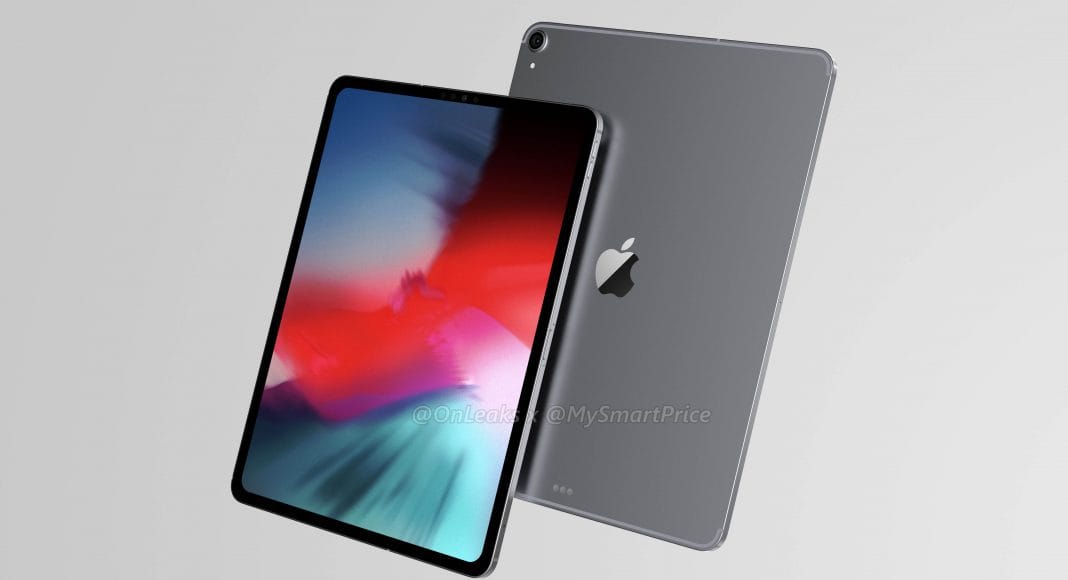
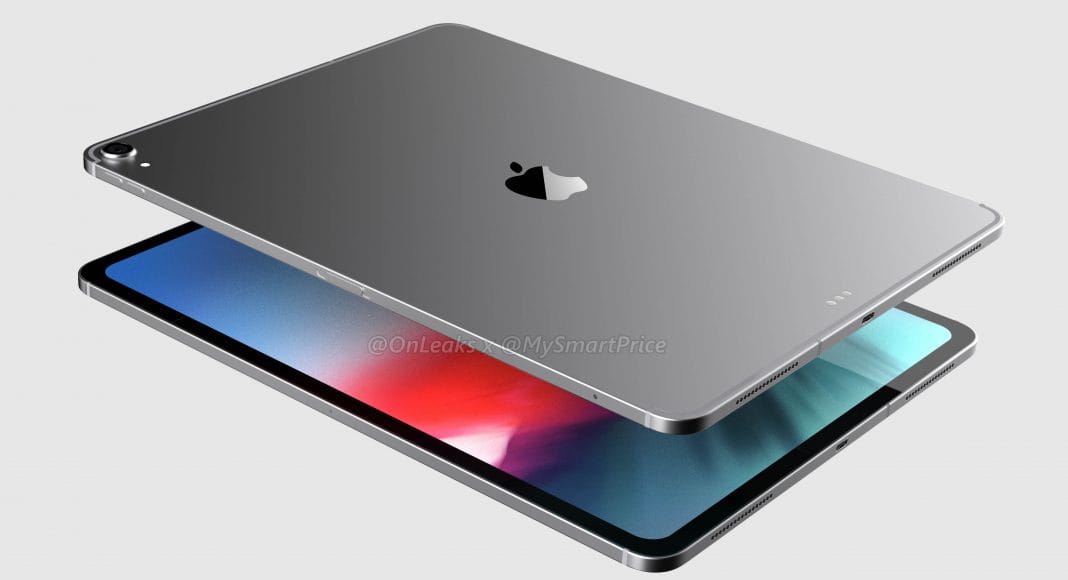
Outre la face avant complètement revue, d'autres nouveautés importantes seraient à noter sur la nouvelle gamme comme un design anguleux à l'iPhone SE, sûrement pour permettre une meilleure prise en main, faute de bordures. De plus, cet iPad s'inspire de l'iPhone 7 : de la disposition des antennes, à la forme du module caméra en passant par la suppression du port mini jack. Aussi, le Smart Connector voit son emplacement déplacé en bas de la face arrière. Enfin, le dos resterait en aluminium pour des raisons de solidité (oublions l'idée de recharge sans fil). Cependant, le rendu affiche une indentation sur le côté droit de l'iPad qui encore reste mystérieuse ...Ce nouvel iPad pourrait aussi nous en apprendre plus sur la nouvelle itération de FaceID. Permettra-t-elle d'authentifier un utilisateur en mode paysage ?
-
Bon plan : WinX HD Video Converter Deluxe pour convertir, redimensionner ou télécharger des vidéos 4K
(Génération NT: logiciels)
WinX HD Video Converter est l'un des outils de traitement vidéo 4K les plus appréciés du marché, il compte aujourd’hui plus de 50 millions d'utilisateurs de par le monde. Une promotion de 50% pour les fêtes de Noël pourrait vous intéresser.
-
Google Announces Chromecast Ultra: 4K & HDR for Chromecast
(AnandTech)
Though the big Google news for today is of course the new lineup of Pixel phones, phones were only a small part of what Google had in store. Alongside their latest in mobile products, Google also used this morning’s event to announce the 3rd generation of Chromecast, the Chromecast Ultra.
The last Chromecast is more of a supplement than a replacement of the current Chromecast 2. Launching at $69, the Ultra’s major feature additions are 4K video support with HDR – essentially upgrading the Chromecast to keep up with the latest in video technology standards. Alongside the new hardware, Google has also announced that they are going to be upgrading their software ecosystem for 4K, including selling 4K movies through the Google Play store.
Google Chromecast Family Chromecast Ultra Chromecast (2) Chromecast Audio Processor ? Marvell ARMADA 1500 Mini Plus SoC (88DE3006) Marvell ARMADA 1500 Mini Plus SoC (88DE3006) Memory ? 512MB N/A Wireless 1x2 2.4GHz/5GHz 802.11ac 1x2 2.4GHz/5GHz 802.11ac 1x2 2.4GHz/5GHz 802.11ac Display Output 4K w/HDR
(HDR10 & Dolby Vision)1080p N/A Max Video Decode 4K 1080p30 N/A Ports HDMI 2.0
Micro-USB
Ethernet (On Power Adapter)HDMI 1.3
Micro-USB (Power)3.5mm Combo Jack
(Analog + Optical Audio)
Micro-USB (Power)Launch Date 11/2016 09/29/2015 09/29/2015 Launch Price $69 $35 $35 Unfortunately specifications on the hardware itself are limited at this time. Google isn’t saying much beyond the fact that the Ultra is capable of decoding and displaying 4K content. From the hardware capabilities alone it’s clear that the underlying SoC is something capable of decoding 4K content and outputting it over HDMI 2.0 with HDCP. This should, with any luck, also mean that we’re finally getting a Chromecast from Google that can handle 1080p60, which has been the Achilles Heel of the prior versions of the media streamer. Given that it’s a Google product, I’d also expect that VP9 support is present, while HEVC support is going to be more questionable.
On the video format front, the big news here of course is that the Chromecast Ultra can handle 4K video. However Google didn’t stop there; the Ultra also supports HDR video via both the HDR10 and Dolby Vision standards. The latter is a particularly interesting development, as to date Dolby Vision support has been very rare. I’m very curious to see where Dolby Vision factors into Google’s larger plans given that they’re bucking the trend here and have their own major content distribution platform. At least for owners of TVs that support he standard, this could help kickstart its use in streaming services.
Meanwhile as Google opted to spend the bulk of their efforts on updating the internals of the Chromecast, the overall design has not significantly changed since last year’s Chomecast 2. The Ultra is still a puck – albeit one that looks slightly thicker than the last – and implements a pair of antennas for improved WiFi reception. At the same time, for users and environments who can’t make WiFi work for them, Google has added Ethernet capabilities to the Ultra by placing an Ethernet port on the power adapter, giving users a wired option to fallback to.
Wrapping things up, the Chromecast Ultra will be launching in November for $69. At almost double the price of the Chromecast 2, this is not going to be replacing the cheaper Chromecast, but instead serve as a premium option for 4K. At the same time, as one of the original Chromecast’s primarily selling points was its low price, it will be interesting to see how the Chromecast Ultra does now that it’s priced closer to stand-alone media streamers. For 4K this is still very much a budget option, but it’s not going to fit the impulse purchase market like the Chromecast 2 does.
-
Apple ouvre à tous sa grosse chasse aux bugs de sécurité
(Génération NT: logiciels)
Juste avant la fin de l'automne, Apple ouvre comme promis son programme de bug bounty à tous les chercheurs en sécurité tiers. Il concerne notamment l'ensemble de ses systèmes d'exploitation, macOS compris.
-
Using a File Erasure Tool Considered Suspicious
(Schneier on Security)
By a California court:
The designer, Carter Bryant, has been accused by Mattel of using Evidence Eliminator on his laptop computer just two days before investigators were due to copy its hard drive. Carter hasn't denied that the program was run on his computer, but he said it wasn't to destroy evidence. He said he had legitimate reasons to use the software. [...] But the wiper programs don't ensure a clean getaway. They leave behind a kind of digital calling card. "Not only do these programs leave a trace that they were used, they each have a distinctive fingerprint," Kessler said. "Evidence Eliminator leaves one that's different from Window Washer, and so on." It's the kind of information that can be brought up in court. And if the digital calling card was left by Evidence Eliminator, it could raise some eyebrows, even if the wiper was used for the most innocent of reasons.
I have often recommended that people use file erasure tools regularly, especially when crossing international borders with their computers. Now we have one more reason to use them regularly: plausible deniability if you're accused of erasing data to keep it from the police.
L'actualité de cette partie est agrégé automatiquement à partir d'autres sites.
Contenus ©2006-2024 Benjamin Poulain
Design ©2006-2024 Maxime Vantorre
